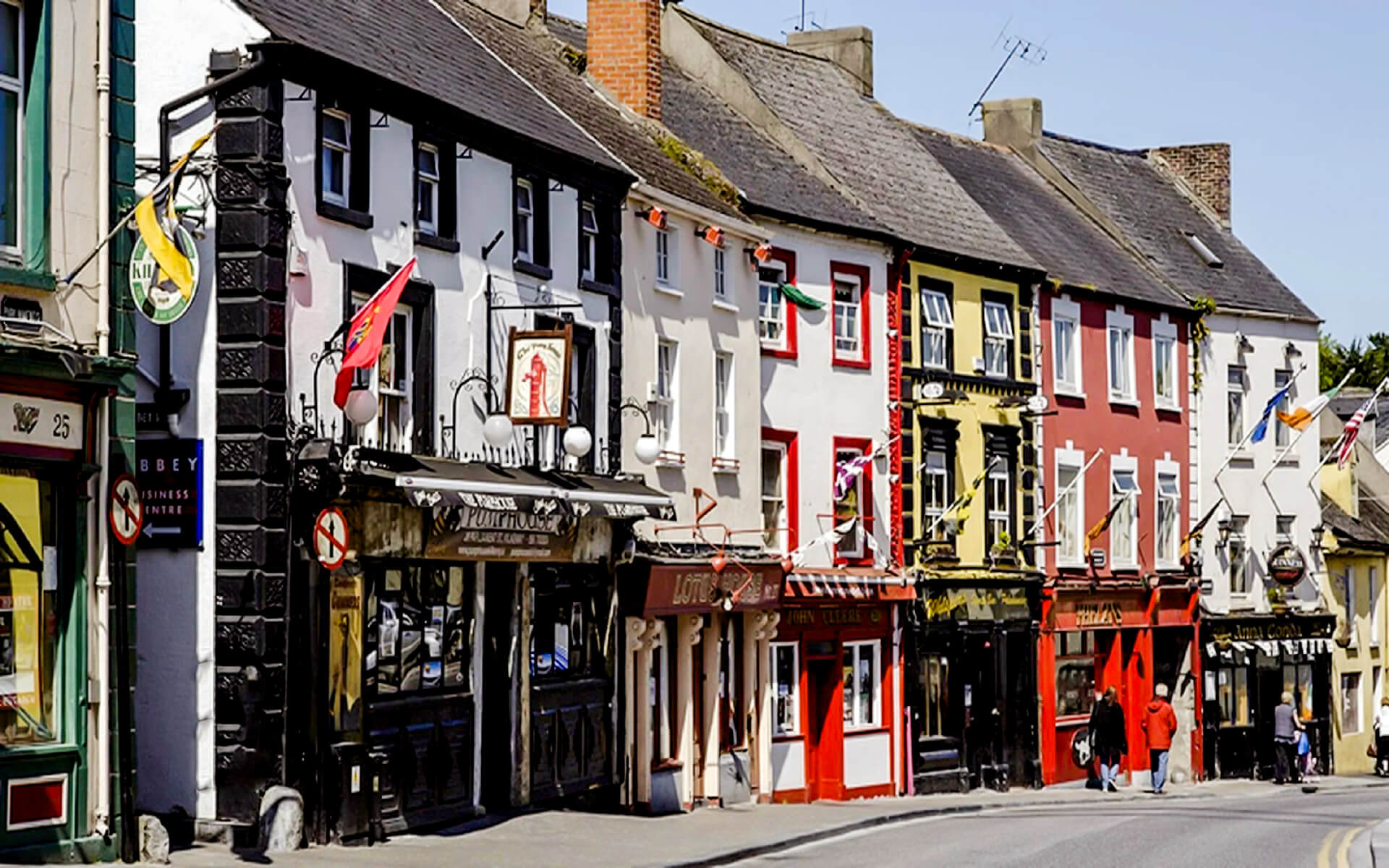[lwptoc]
Kilkenny (Irish: Cill Chainnigh, meaning “church of Cainnech”) is a city and the county town of County Kilkenny in the south-east of Ireland. It is located in the province of Leinster, on both sides of the River Nore. Although the Local Government Act 2001 allows for “the continuous use of the designation city,” the city is controlled by a Borough Council and a Mayor, which is a level below that of city council under the state’s Local government. The borough has a population of 8,711, however the bulk of the population resides beyond the borough boundary: the total population of the Borough and Environs is 24,423, according to the 2011 Irish Census.
Kilkenny is a well-known tourist attraction. Kilkenny commemorated its 400th anniversary after being granted city status in 1609. Though referred to as a city, Kilkenny City is the size of a major town, about the size of Navan, which is located on the banks of the Boyne in county Meath. Kilkenny Castle, St. Canice’s Cathedral and round tower, Rothe House, Shee Alms House, Black Abbey, St. Mary’s Cathedral, Kilkenny Town Hall, St. Francis Abbey, Grace’s Castle, and St. John’s Priory are among the ancient structures in the city and surrounds. Kilkenny is well-known for its cultural offerings, which include craft and design classes, the Watergate Theatre, public parks, and museums. Kilkenny Arts Festival, Cat Laughs comedy festival, and music at the Rhythm and Rootsfestival and the Source concert are all annual events. It is a popular starting point for exploring the neighboring cities, villages, and countryside. There is now controversy around the Kilkenny Central Access Scheme, which is a road planned to be constructed through the city center.
Kilkenny originated as a religious institution within the kingdom of Ossory in the early sixth century. Kilkenny Castle and a set of fortifications were erected after the Norman conquest of Ireland to safeguard the burghers of what became a Norman trading town. In 1207, William Marshall, Lord of Leinster, granted Kilkenny a charter as a town. Kilkenny was under Norman-Irish rule by the late thirteenth century. The Statutes of Kilkenny, enacted in 1367 at Kilkenny, sought to slow the fall of the Hiberno-Norman Lordship of Ireland. Kilkenny was awarded the title of a city by King James I of England in 1609. Following the 1641 Rebellion, the Irish Catholic Confederation, often known as the “Confederation of Kilkenny,” was headquartered in Kilkenny and lasted until the Cromwellian invasion of Ireland in 1649.
From the late seventeenth century, Kilkenny was a well-known brewing center. Kilkenny is a tourism and creative center in the late twentieth century.


